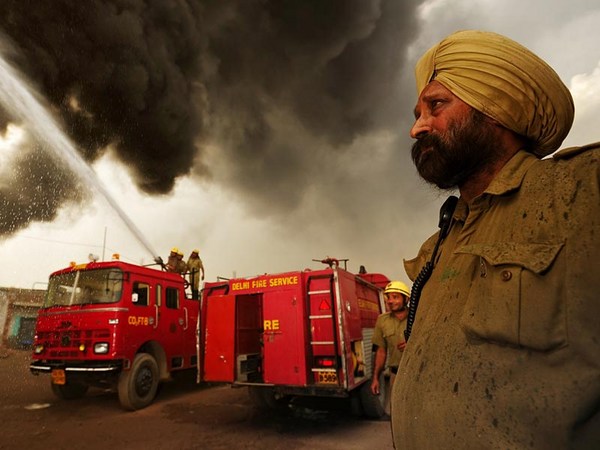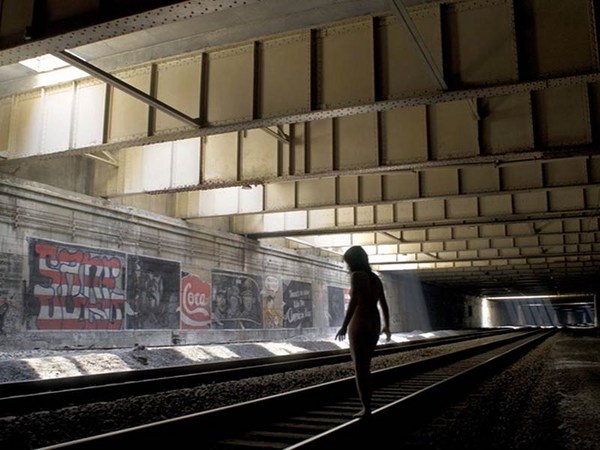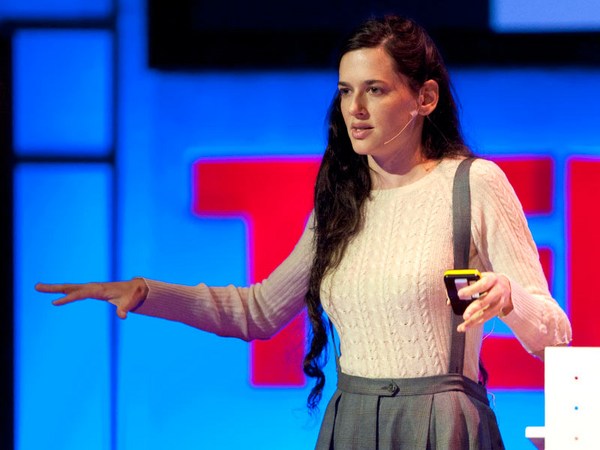Right now is the most exciting time to see new Indian art. Contemporary artists in India are having a conversation with the world like never before. I thought it might be interesting, even for the many long-time collectors here with us at TED, local collectors, to have an outside view of 10 young Indian artists I wish everyone at TED to know.
The first is Bharti Kher. The central motif of Bharti's practice is the ready-made store-bought bindi that untold millions of Indian women apply to their foreheads, every day, in an act closely associated with the institution of marriage. But originally the significance of the bindi is to symbolize the third eye between the spiritual world and the religious world. Bharti seeks to liberate this everyday cliche, as she calls it, by exploding it into something spectacular. She also creates life-size fiberglass sculptures, often of animals, which she then completely covers in bindis, often with potent symbolism. She says she first got started with 10 packets of bindis, and then wondered what she could do with 10 thousand.
Our next artist, Balasubramaniam, really stands at the crossroads of sculpture, painting and installation, working wonders with fiberglass. Since Bala himself will be speaking at TED I won't spend too much time on him here today, except to say that he really succeeds at making the invisible visible.
Brooklyn-based Chitra Ganesh is known for her digital collages, using Indian comic books called amar chitra kathas as her primary source material. These comics are a fundamental way that children, especially in the diaspora, learn their religious and mythological folk tales. I, for one, was steeped in these. Chitra basically remixes and re-titles these iconic images to tease out some of the sexual and gender politics embedded in these deeply influential comics. And she uses this vocabulary in her installation work as well.
Jitish Kallat successfully practices across photography, sculpture, painting and installation. As you can see, he's heavily influenced by graffiti and street art, and his home city of Mumbai is an ever-present element in his work. He really captures that sense of density and energy which really characterizes modern urban Bombay. He also creates phantasmagoric sculptures made of bones from cast resin. Here he envisions the carcass of an autorickshaw he once witnessed burning in a riot.
This next artist, N.S. Harsha, actually has a studio right here in Mysore. He's putting a contemporary spin on the miniature tradition. He creates these fine, delicate images which he then repeats on a massive scale. He uses scale to more and more spectacular effect, whether on the roof of a temple in Singapore, or in his increasingly ambitious installation work, here with 192 functioning sewing machines, fabricating the flags of every member of the United Nations.
Mumbai-based Dhruvi Acharya builds on her love of comic books and street art to comment on the roles and expectations of modern Indian women. She too mines the rich source material of amar chitra kathas, but in a very different way than Chitra Ganesh. In this particular work, she actually strips out the images and leaves the actual text to reveal something previously unseen, and provocative.
Raqib Shaw is Kolkata-born, Kashmir-raised, and London-trained. He too is reinventing the miniature tradition. He creates these opulent tableaus inspired by Hieronymus Bosch, but also by the Kashmiri textiles of his youth. He actually applies metallic industrial paints to his work using porcupine quills to get this rich detailed effect.
I'm kind of cheating with this next artist since Raqs Media Collective are really three artists working together. Raqs are probably the foremost practitioners of multimedia art in India today, working across photography, video and installation. They frequently explore themes of globalization and urbanization, and their home of Delhi is a frequent element in their work. Here, they invite the viewer to analyze a crime looking at evidence and clues embedded in five narratives on these five different screens, in which the city itself may have been the culprit.
This next artist is probably the alpha male of contemporary Indian art, Subodh Gupta. He was first known for creating giant photo-realistic canvases, paintings of everyday objects, the stainless steel kitchen vessels and tiffin containers known to every Indian. He celebrates these local and mundane objects globally, and on a grander and grander scale, by incorporating them into ever more colossal sculptures and installations. And finally number 10, last and certainly not least,
Ranjani Shettar, who lives and works here in the state of Karnataka, creates ethereal sculptures and installations that really marry the organic to the industrial, and brings, like Subodh, the local global. These are actually wires wrapped in muslin and steeped in vegetable dye. And she arranges them so that the viewer actually has to navigate through the space, and interact with the objects. And light and shadow are a very important part of her work. She also explores themes of consumerism, and the environment, such as in this work, where these basket-like objects look organic and woven, and are woven, but with the strips of steel, salvaged from cars that she found in a Bangalore junkyard.
10 artists, six minutes, I know that was a lot to take in. But I can only hope I've whet your appetite to go out and see and learn more about the amazing things that are happening in art in India today. Thank you very much for looking and listening. (Applause)





